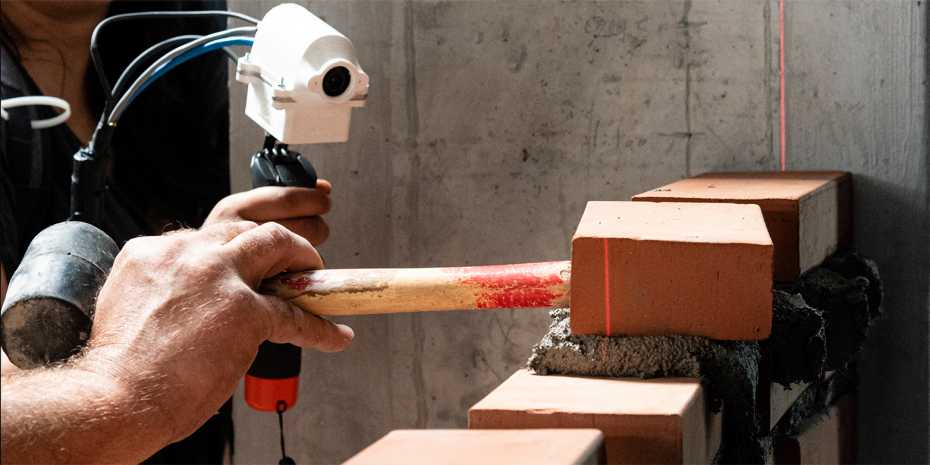
The new technology from incon.ai allows architectural artworks to be created. It is based on augmented reality (AR) and brings together the advantages of computer design and human craftsmanship. This makes it possible to realize even the most unorthodox ideas, it was reported in a press release.
The technology was developed by Timothy Sandy, a specialist in robotics and an ETH Pioneer Fellow at the Swiss Federal Institute of Technology in Zurich (ETH). The software developer (33) recently founded incon.ai together with Fadri Furrer and Abel Gawel. As part of his ETH Pioneer Fellowship, Sandy is currently assessing how the technology could be positioned in the market and who it would benefit.
Architects draft the design on the computer and then load thee 3D plans into the incon.ai software. While working on site, the bricklayer then directs a camera at the construction. A simple smartphone functions as a terminal device. The software recognizes the bricks and compares the position of the individual components with those in the virtual design. A monitor shows the builders exactly how they need to place individual bricks.
Two pilot projects have been completed so far, both based on designs by ETH architects from Gramazio Kohler: the semi-transparent façade of a wine cellar and the walls of the cafeteria of the engineering, planning and consulting company Basler & Hofmann in Esslingen ZH.
“The new technology is much more accurate than other AR solutions,” explained Sandy. It detects and tracks objects even when the camera wobbles, something blocks the view or there are other elements in the background. “This innovative technology allows humans to build with almost the same accuracy as robotic systems.”
Related news
Contact us
Can we put you in touch with a peer company or research institute? Do you need any information regarding your strategic expansion to Switzerland's technology and business center?
info@greaterzuricharea.com